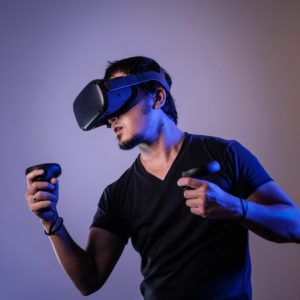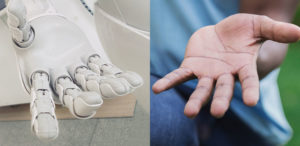Okay brands, you’ve deliberated for long enough. It’s 2021 and we’re emerging from the biggest pandemic to shake our world since the Spanish Flu of 1918.
It’s time to break free from analysing the short-term results for your next quarter thinking. We at Foresight Factory want to share the very latest consumer vision, from our work with Dentsu, that’s shaping the next decade as far as 2030.
Have we piqued your interest? Then read on.
Our latest study looks at the long-term influences that brands must understand and master, giving a new perspective on the drivers of long term, sustainable brand growth.
Built on robust research, we draw on in-depth interviews with a panel of 20 world renowned futurists, academics, authors, and experts. Plus, multiple consumer surveys from more than 20 countries, and a comprehensive technology and innovation scan of the next decade. Not to mention extensive secondary research and case study analysis.
Grappling to see the relevance of this data overload?
We believe it’s essential that brands develop what’s called ‘inclusive intelligence’ — the ability to incorporate new customer views and behaviours into their value proposition, seen in the context of widening inequality, societal dislocation, and ethical complexity.
Now if that doesn’t pique your interest, here comes the cavalry.
There are 4 themes shaping the next ten years in terms of consumer behaviour and brand response. Each is underpinned by three key trends. To whet your whistle, here’s a sneak peak of each theme, with a supporting trend, data point and an indicative event from the pathway to 2030:
 Universal activism
Universal activism
In the 2010s, brands were rightly obsessed about meeting consumer needs. In the 2020s, brands will need to reconnect with their customers as activists, driven in their decision-making by a new range of influences and causes, from climate change to data privacy and new definitions of identity.
Trend – Acclimatise now. Seven in ten people believe that in 2030 brands will be penalised through fines or higher taxation if they fail to reduce their environmental impact.
Indicative event in the 2020s – Extinction Rebellion becomes a trans-national mainstream political party.
- Synthetic society
In the 2010s consumers and brands alike favoured natural, organic products and ways of living. In the 2020s, we’ll see a shift towards synthetic enhancements and virtual experiences that improve our health, the ways we express emotion and experience pleasure.

Trend – Virtual sets the standard. The next generation of augmented technology will elevate day to-day experiences, overlaying audio, and visual content across an average day in 2030, opening up a new range of immersive experiences. Expect the haptic suit to become the new joystick, allowing consumers to feel physical sensations corresponding with their virtual experience.
Indicative event in the 2020s – First VR rehab clinic opens in Tokyo.
- Bigger, bolder brands
In the 2010s, consumers became empowered and able to dictate the terms of their engagement with brands. Today, the focus is shifting to how brands can help service consumers more effectively across all aspects of their lives. Da

ta will enable brands to be more selective in the consumers they choose to engage with, focusing on the most lucrative segments.
Trend – 5-star citizens. By 2030 it will be standard practice for brands and governments to score their consumers/citizens, determining whether they can access exclusive or even public services. Already today, one-third of consumers globally believe it would be acceptable in future for governments to use their personal data to assess their trustworthiness.
Indicative event in the 2020s – Social media sites introduce service to allow user-to-user scoring.
- The human dividend
In the 2010s, we were focused on digitising processes and business operations, with an eye on digital skills and education. In the 2020s, attention will shift towards all that makes us human and unique—as well as understanding the limitations.

Trend – What robots can’t do.
By 2030 there will be an even greater premium on human skills, such as creativity and compassion. Human vs. automated services will become a premium brand proposition and a key factor in consumer choice. A never-before event we could see emerge by 2030, is product labelling that clearly states whether something was produced by a robot or a human.
Indicative event in the 2020s – ‘Made by humans’ product labels designate the level of human vs. robot input.
Does all of this leave you feeling overwhelmed? Don’t be.
On the right path, building ‘inclusive intelligence’ should be plain sailing. It begins with a deep understanding of consumer behaviour and demands pure, unchallenged customer centricity at the heart of your business. That’s where we come in.
So, why not let’s continue the conversation? Our team will help you to make sense of it all.
Now’s time to see beyond and define your customer in 2030, while there’s still time to adapt your strategy.
And getting this right will undoubtedly mean the difference between crushing it or crashing out in the new decade.